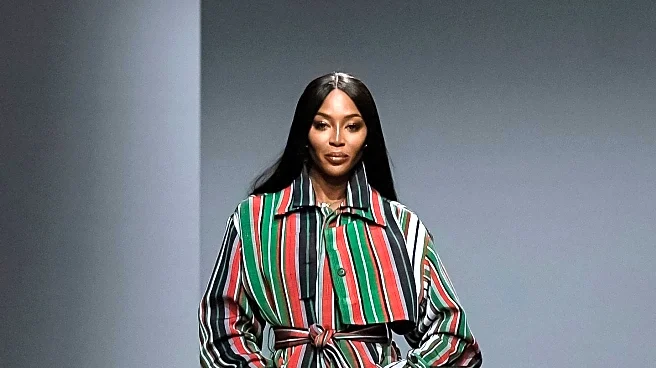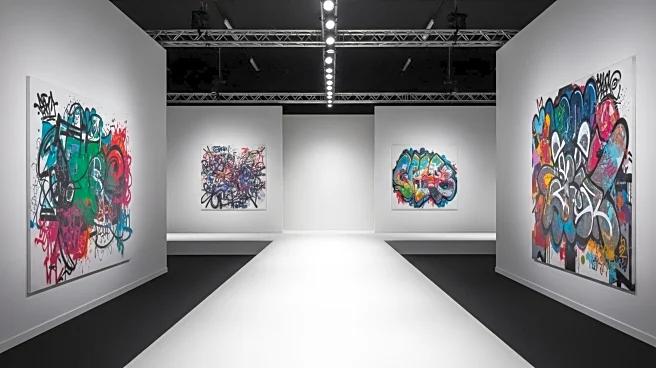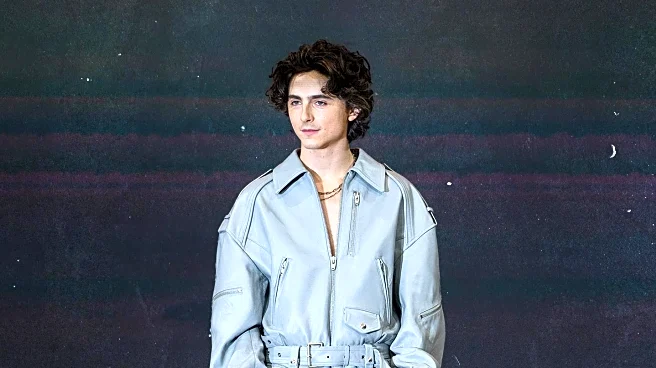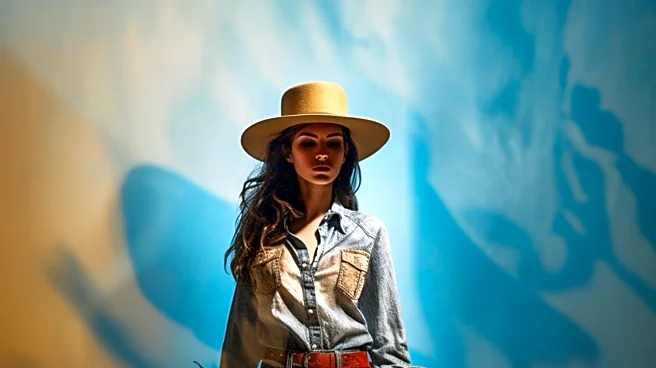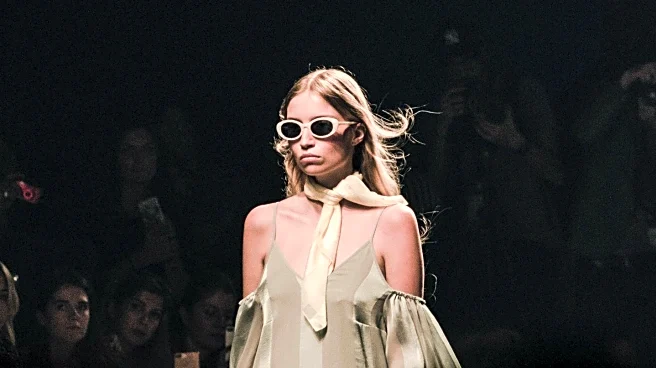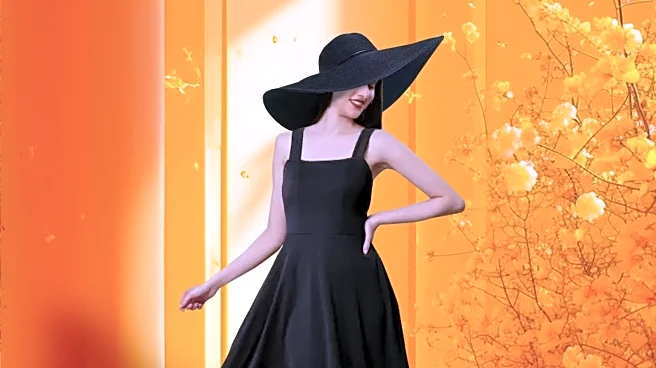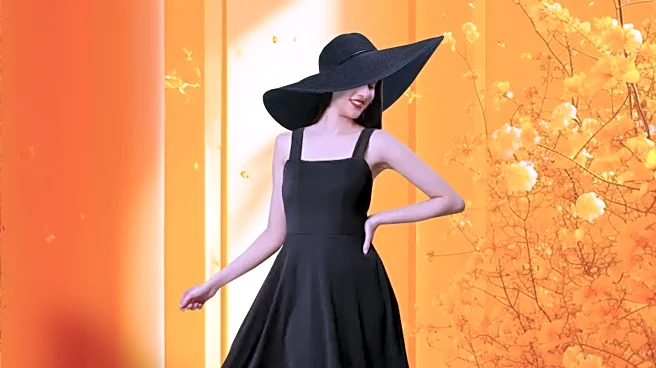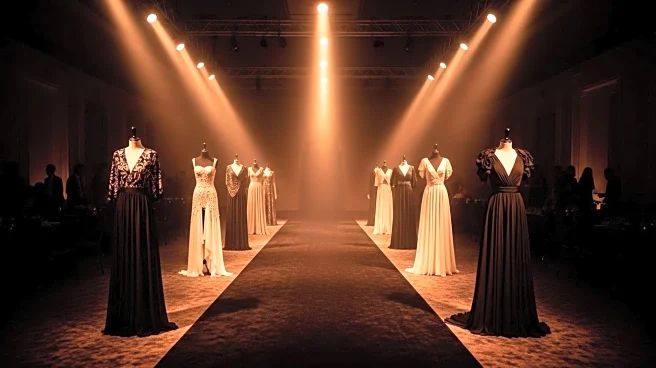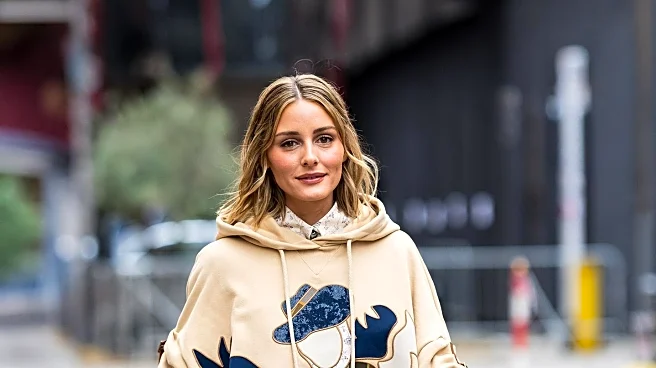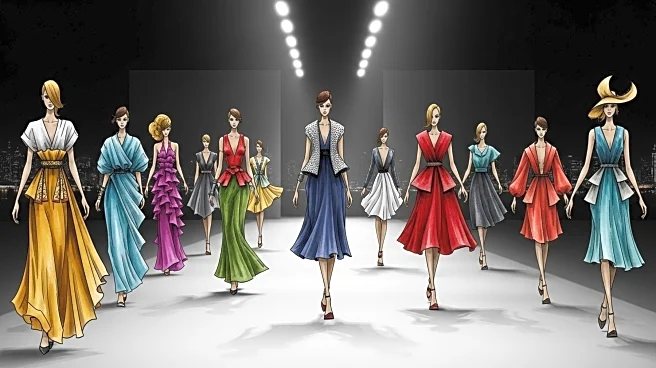What's Happening?
Off-White's creative director, IB Kamara, has unveiled a new collection at New York Fashion Week, drawing inspiration from the city's vibrant music and nightlife scene. Kamara, who has a deep-rooted connection to music from his upbringing in Sierra Leone and Gambia, collaborated with four local artists to create a graffiti mural that serves as the backdrop for the collection. This mural, which adorns the rooftop courts at The New Design High School, captures the essence of New York City's five boroughs through a blend of colors, phrases, and cultural references. The installation pays homage to the late Virgil Abloh's legacy, maintaining the subversive and imaginative spirit of Off-White.
Why It's Important?
This event marks a significant moment for Off-White as it continues to evolve under the direction of IB Kamara. By integrating local art and cultural elements into the fashion show, Kamara not only honors the brand's roots but also strengthens its connection to the urban landscape of New York City. This approach could influence future fashion presentations, encouraging designers to incorporate local culture and art into their work. The collaboration with local artists also highlights the importance of community engagement in the fashion industry, potentially setting a precedent for other brands to follow.
What's Next?
Following the successful showcase, Off-White may continue to explore collaborations with local artists and communities in future collections. This strategy could enhance the brand's appeal and relevance in diverse markets. Additionally, the positive reception of the graffiti-inspired installation might inspire other fashion houses to adopt similar approaches, integrating local culture into their designs. As Kamara continues to lead Off-White, the fashion world will be watching to see how he further develops the brand's identity while honoring Virgil Abloh's legacy.
Beyond the Headlines
The use of graffiti and local art in high fashion raises questions about the intersection of street culture and luxury brands. This blending of styles challenges traditional notions of fashion and art, potentially leading to a broader acceptance of diverse cultural expressions within the industry. It also prompts discussions about the role of fashion in representing and preserving cultural identities, as well as the ethical considerations of using local art in commercial contexts.
